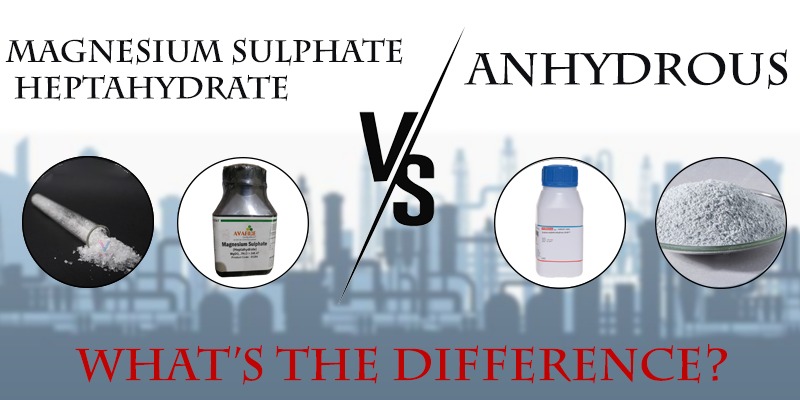
Magnesium Sulphate Heptahydrate vs. Anhydrous: What’s the Difference?
Magnesium sulphate is a widely used chemical that is available in various forms, depending on the amount of water in the crystal structure. Two of the most commonly found forms are magnesium sulphate heptahydrate and magnesium sulphate anhydrous. Although the basic chemical is the same (MgSO₄), there are obvious structural, property, and usage differences when considering the distinct chemical forms. It is important to understand the difference in forms of magnesium sulphate for the agricultural, pharmaceutical, and manufacturing industries.
1. Chemical Composition and Structure
Heptahydrate magnesium sulphate (MgSO₄·7H₂O):
This contains seven water molecules per magnesium sulphate molecule. Water gives a crystalline structure to it, allowing it to be unsaturated in water.
Anhydrous Magnesium Sulphate (MgSO₄)
The anhydrous form contains no water or is dehydrated relative to the compound and generally is presented as a white, odorless powder.
2. Physical Appearance
- Heptahydrate: Commonly seen as clear or colorless crystals or granular powder. It is best known commercially as Epsom salt.
- Anhydrous: This form appears as a white powder or granule and is more hygroscopic (absorbs moisture faster) than the heptahydrate.
3. Solubility and Stability
- Heptahydrate: Due to its hydrous structure, it is soluble in water. It is reasonably stable at environmental temperature but will be decomposed by heating, releasing water.
- Anhydrous: Also soluble in water, but must be maintained in moisture-proof storage containers to prevent rehydrating. The anhydrous form can "pick up" moisture from the air and convert back to its hydrated form.
4. Applications and Uses
Magnesium Sulphate Heptahydrate:
- Widely used in agriculture as a magnesium-rich fertilizer.
- Commonly added to bath salts for muscle relaxation and pain relief.
- Used in pharmaceuticals as a saline laxative.
- Plays a role in brewing and food processing.
Magnesium Sulphate Anhydrous:
- Preferred in industrial processes requiring a dry compound, such as drying solvents and gases.
- Used in the manufacture of ceramics, dyes, and detergents.
- Acts as a drying agent in organic synthesis labs.
5. Storage and Handling
- Heptahydrate: Can be stored in standard conditions but should be kept away from high temperatures to prevent loss of water.
- Anhydrous: Requires airtight containers and a moisture-free environment due to its strong affinity for water.
6. Cost and Availability
Generally, magnesium sulphate heptahydrate is cheaper and more widely known given its many uses in agriculture and health and wellness products. Anhydrous is more specialized and may be more expensive and is mainly only used in a scientific or industrial context.
Conclusion
While both types of magnesium sulphate have important roles, their differing levels of water hydration greatly influence their physical properties and application. Part of being efficient is ensure you select the right magnesium sulphate whether you are using it in agriculture, in pharmaceuticals or , or industrial manufacturing. Understanding the difference between magnesium sulphate heptahydrate and its anhydrous forms will you in a commercial and laboratory setting.